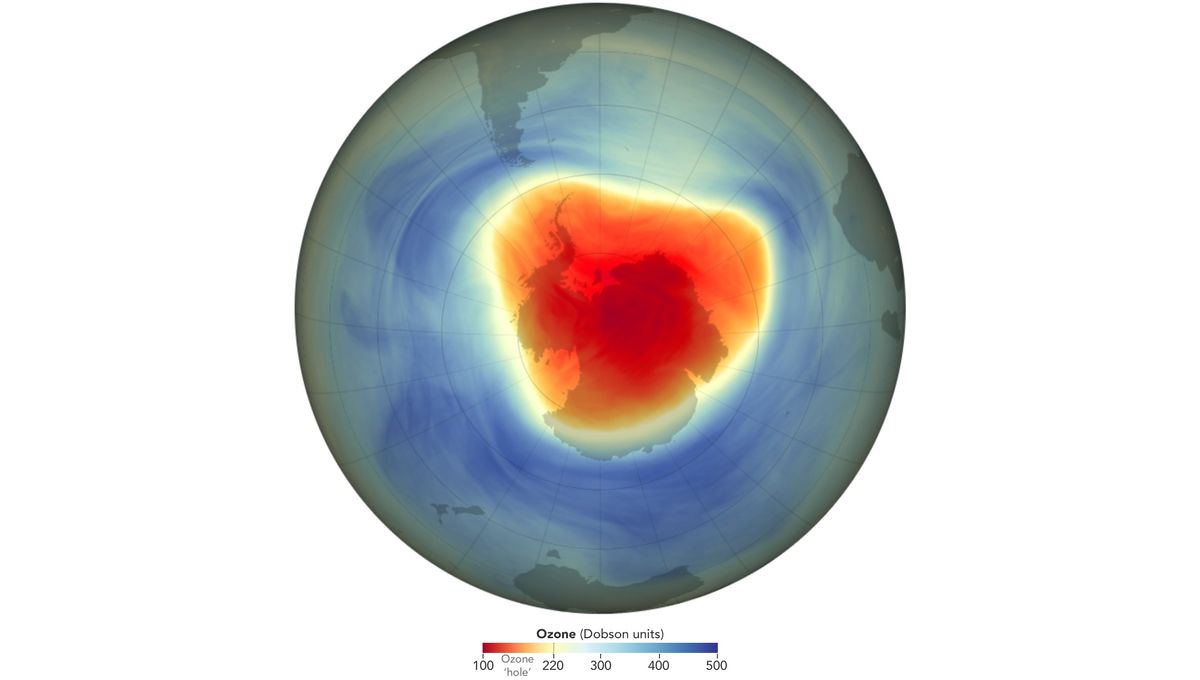
The peak size of the ozone hole over the Antarctic in 2024 was the seventh smallest since recovery began, NASA and the National Oceanic and Atmospheric Administration (NOAA) have found. Even its maximum extent was smaller than it has been in five years, since the even smaller hole in 2019.
The monthly average was around 20 million square kilometers (8 million square miles), while the peak was reached on September 28 at 22.4 million square kilometers (8.5 million square miles). At its worst, in the year 2000, the hole was 50 percent larger and a lot more depleted.
“The 2024 Antarctic hole is smaller than ozone holes seen in the early 2000s,” Paul Newman, leader of NASA’s ozone research team and chief scientist for Earth sciences at NASA’s Goddard Space Flight Center, said in a statement. “The gradual improvement we’ve seen in the past two decades shows that international efforts that curbed ozone-destroying chemicals are working.”
Our atmosphere has a layer that is rich in ozone, a molecule made of three oxygen atoms. Ozone absorbs ultraviolet radiation from the Sun – a crucial protection, since UV light can harm us.
In the 1970s, the concentration of ozone (measured in Dobson units) started dropping, and scientists discovered that chlorofluorocarbons (CFCs) were responsible for this destruction. By the middle of the 1980s, large areas of the Antarctic stratosphere hardly had any ozone by early October every year. This year, the concentration was 107 Dobson units, just over half of what it was in 1979.
“For 2024, we can see that the ozone hole’s severity is below average compared to other years in the past three decades, but the ozone layer is still far from being fully healed,” explained Stephen Montzka, senior scientist of the NOAA Global Monitoring Laboratory.
“That is well below the 225 Dobson units that was typical of the ozone cover above the Antarctic in 1979,” added NOAA research chemist Bryan Johnson. “So, there’s still a long way to go before atmospheric ozone is back to the levels before the advent of widespread CFC pollution.”
The agencies estimate that the Ozone Hole is still on track to be closed for good by 2066 and ozone levels will be back to pre-1980 levels across the world by 2040. This was only possible thanks to the Montreal Protocol, which banned ozone-harming chemicals. To say it was a landmark international agreement is almost too little: It is among the few United Nations treaties ratified by every country in the world, and it truly shows what we can do when humanity works together.
Source Link: Ozone Hole At Its Smallest In Five Years – Covering Around 20 Million Square Kilometers